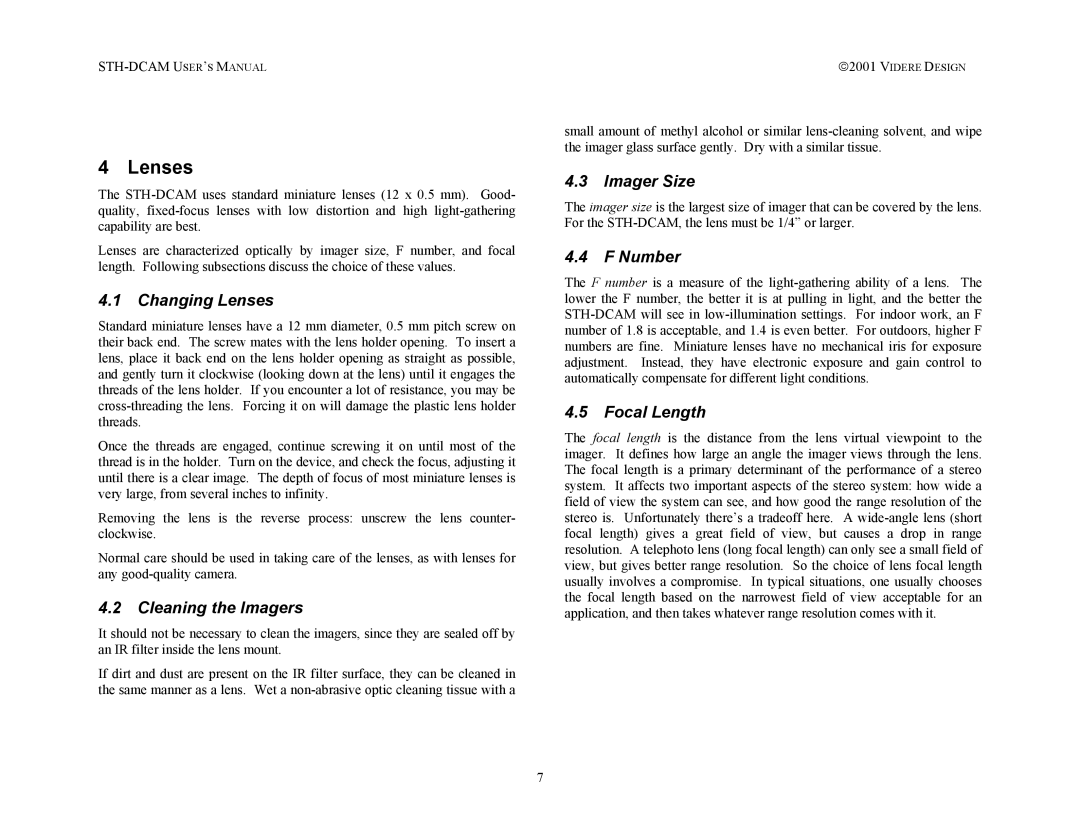2001 VIDERE DESIGN |
4 Lenses
The
Lenses are characterized optically by imager size, F number, and focal length. Following subsections discuss the choice of these values.
4.1Changing Lenses
Standard miniature lenses have a 12 mm diameter, 0.5 mm pitch screw on their back end. The screw mates with the lens holder opening. To insert a lens, place it back end on the lens holder opening as straight as possible, and gently turn it clockwise (looking down at the lens) until it engages the threads of the lens holder. If you encounter a lot of resistance, you may be
Once the threads are engaged, continue screwing it on until most of the thread is in the holder. Turn on the device, and check the focus, adjusting it until there is a clear image. The depth of focus of most miniature lenses is very large, from several inches to infinity.
Removing the lens is the reverse process: unscrew the lens counter- clockwise.
Normal care should be used in taking care of the lenses, as with lenses for any
4.2Cleaning the Imagers
It should not be necessary to clean the imagers, since they are sealed off by an IR filter inside the lens mount.
If dirt and dust are present on the IR filter surface, they can be cleaned in the same manner as a lens. Wet a
7
small amount of methyl alcohol or similar
4.3Imager Size
The imager size is the largest size of imager that can be covered by the lens. For the
4.4F Number
The F number is a measure of the
4.5Focal Length
The focal length is the distance from the lens virtual viewpoint to the imager. It defines how large an angle the imager views through the lens. The focal length is a primary determinant of the performance of a stereo system. It affects two important aspects of the stereo system: how wide a field of view the system can see, and how good the range resolution of the stereo is. Unfortunately there’s a tradeoff here. A
